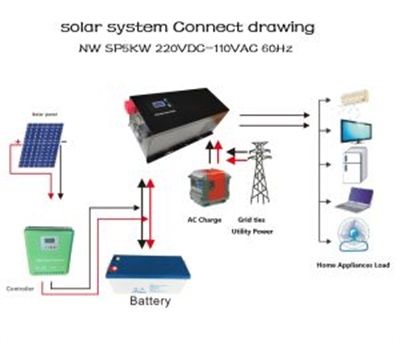Understanding Solar Inverters The Heart of Your Solar Power System
Understanding Solar Inverters: The Heart of Your Solar Power System
What is a Solar Inverter?
A solar inverter is a crucial component of a solar power system that converts the direct current (DC) electricity generated by solar panels into alternating current (AC) electricity. This conversion is essential because most homes and appliances run on AC electricity. Without an inverter, the power produced by the solar panels would remain unusable. In this article, we will explore the different types of solar inverters, their functionalities, and their importance in maximizing solar energy efficiency.
Types of Solar Inverters
There are primarily three types of solar inverters: string inverters, microinverters, and power optimizers. Each type offers unique advantages depending on the installation setup and specific energy needs.

String inverters are the most common type used in residential solar installations. They connect multiple solar panels in series, allowing them to work together as a single unit. This setup is cost-effective and straightforward but can lead to energy losses if one panel is shaded or underperforming.
Microinverters, on the other hand, are installed on each individual solar panel, providing independent operation. This means that each panel can optimize its performance regardless of the others. While microinverters can be more expensive upfront, they often yield greater energy production in varied lighting conditions.
Power optimizers combine the benefits of both string inverters and microinverters. They are installed on each panel, optimizing energy output while being connected to a central string inverter. This setup balances cost and performance, making it a popular choice for many homeowners.
How Do Solar Inverters Work?
The primary function of a solar inverter is to convert DC electricity generated by solar panels into usable AC electricity. During sunlight hours, solar panels produce DC electricity, which flows to the inverter. The inverter then employs a complex circuit to convert this DC power into AC power at a specific voltage and frequency suitable for home use.
In addition to conversion, modern solar inverters also perform several essential functions, such as monitoring the system's performance, managing power loads, and ensuring safety by disconnecting from the grid during outages. This advanced technology helps homeowners maximize their energy efficiency while protecting their solar systems.
The Importance of Solar Inverters
Solar inverters play a pivotal role in the effectiveness and reliability of solar energy systems. Besides facilitating the conversion of energy, they also enhance system efficiency by optimizing energy production. A high-quality inverter can significantly increase the overall output of a solar panel system, ensuring that homeowners get the most out of their investment.
Moreover, the monitoring features offered by many modern inverters allow users to track their energy production and consumption in real-time. This insight helps homeowners identify when their energy usage is highest, allowing for better management of their electricity consumption and potential savings on utility bills.
Conclusion: Investing in a Quality Solar Inverter

Choosing the right solar inverter is as important as selecting the solar panels themselves. With various options available, it's crucial to consider factors such as system size, shading issues, and budget when making a decision. Investing in a high-quality solar inverter can lead to significant long-term savings and a more efficient solar power system. As renewable energy continues to gain traction, understanding the vital role of solar inverters will empower homeowners to make informed choices and contribute to a sustainable future.

